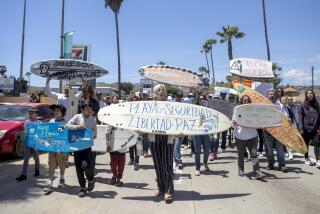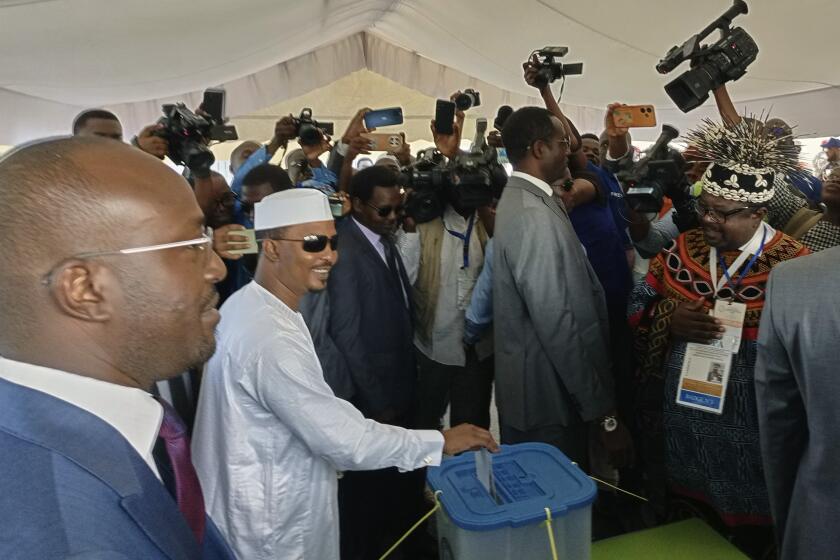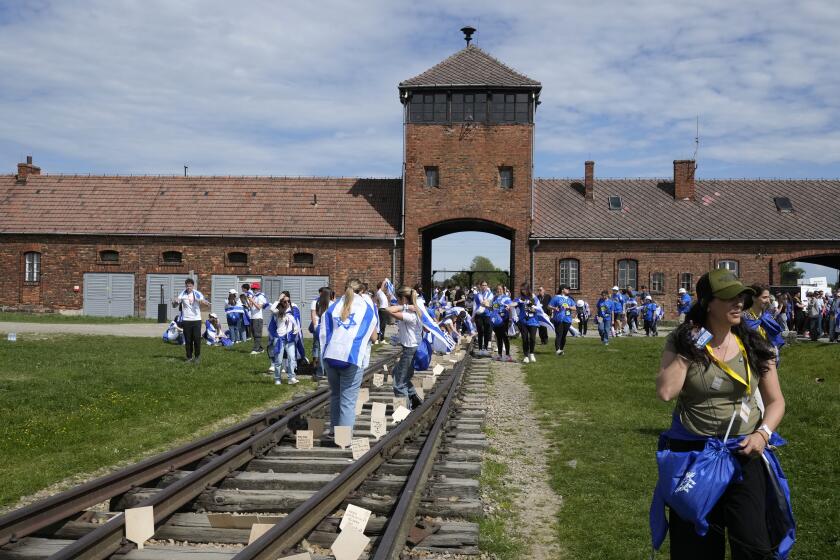Only Lenin Museum in Capitalist World : Finland Exhibits Bonds to Soviets
The domed brow and visionary’s piercing eyes are unmistakable, whether staring out from grainy old photographs or frozen in the heavy brown bust at the end of the hall.
The images are of V. I. Lenin, the founding father of the Russian Revolution, who lived and plotted in this industrial city 110 miles north of Helsinki for about a month in his years of exile before the Bolsheviks took power.
He met Joseph Stalin for the first time in Tampere, and today his life and work are commemorated here in what organizers say is the only Lenin museum in the capitalist world.
The museum was founded in 1946 by the Finnish-Soviet Friendship Society and is housed in the very rooms where the Russian Social Democratic Labor Party (RSDLP), led by Lenin, held its first conference in December, 1905.
Lenin, Stalin, Trotsky
The 41 delegates included Lenin, Stalin and Leon Trotsky, and their photographs hang together on one wall.
Lenin lived in Finland for most of the two years following the abortive Russian revolution in November, 1905, and was in hiding in Finland just before the 1917 October Revolution.
The fledgling RSDLP held its second conference in Tampere’s workers’ hall in November, 1906.
It was here, museum official Ritva Valkama said, that Lenin declared that if the Bolsheviks won power they were prepared to recognize the independence of Finland.
The most treasured exhibit is a copy of the document signed by Lenin and others on Dec. 31, 1917, in which the Soviet government recognized Finnish independence, she said.
Soviet Tourist Spot
“All the Soviet tourists traveling to Tampere come here, and many come to Tampere because of the museum,” Valkama said.
But it is also increasingly popular with young Finns. “The young people are coming more than before because they like (Soviet leader Mikhail S.) Gorbachev,” she said.
The sale of books by Gorbachev, along with the sale of postcards and pins, help to pay for the upkeep of the museum. Other support comes from the city of Tampere and the Finnish Ministry of Education.
Pertti Paltila, Tampere’s deputy town clerk, said the Finnish-Soviet Friendship Society was formed in 1944 just after the two countries had fought a bloody war.
‘Landmark of Cooperation’
“It was seen just after the war as very important to develop this museum as some kind of landmark of the cooperation between the Russian working movement and the Finnish working movement,” he said.
The friendship society still runs the museum.
“This museum reflects the good relations between the Soviet Union and Finland,” Paltila said. “Of course many Soviet tourists visit. But I think it gives our people, especially schoolchildren, a reflection from the times when the working class of Finland and Russian socialists had these close links.”
In 1987, 29,000 visitors saw the museum’s two main rooms, one chronicling Lenin’s life, the other his links with Finland and Finnish communists.
Deep Links
The links run deep. His first Finnish friend was a young metal worker named Oskar Engberg whom he met when both were banished to the Siberian village of Shushenskoye.
Engberg later became Lenin’s best man at his wedding.
In all, Lenin wrote 300 letters and articles about the country, Valkama said, and some are exhibited.
The collections also include historic photographs, pamphlets, paintings, photocopies of newspapers and even a hologram of a tea glass that Lenin used while on the run.
Moscow Donations
Most of the material relating to Finland was found in Finnish archives, Valkama said, but some exhibits have been donated by the V. I. Lenin Central Museum in Moscow.
The two museums exchange material and information, and the Tampere museum has been pictured on a Soviet postage stamp.
More to Read
Start your day right
Sign up for Essential California for news, features and recommendations from the L.A. Times and beyond in your inbox six days a week.
You may occasionally receive promotional content from the Los Angeles Times.






